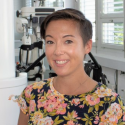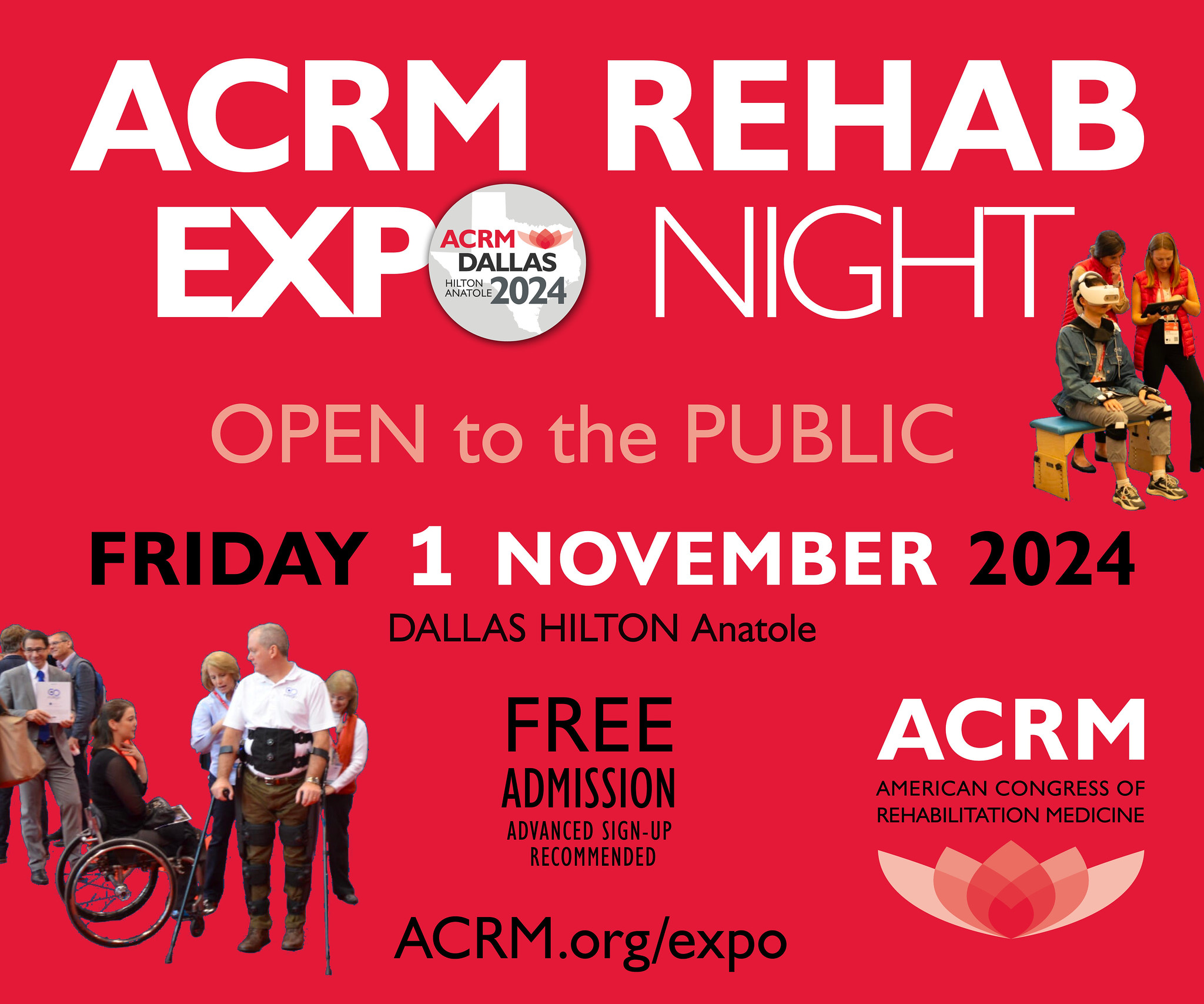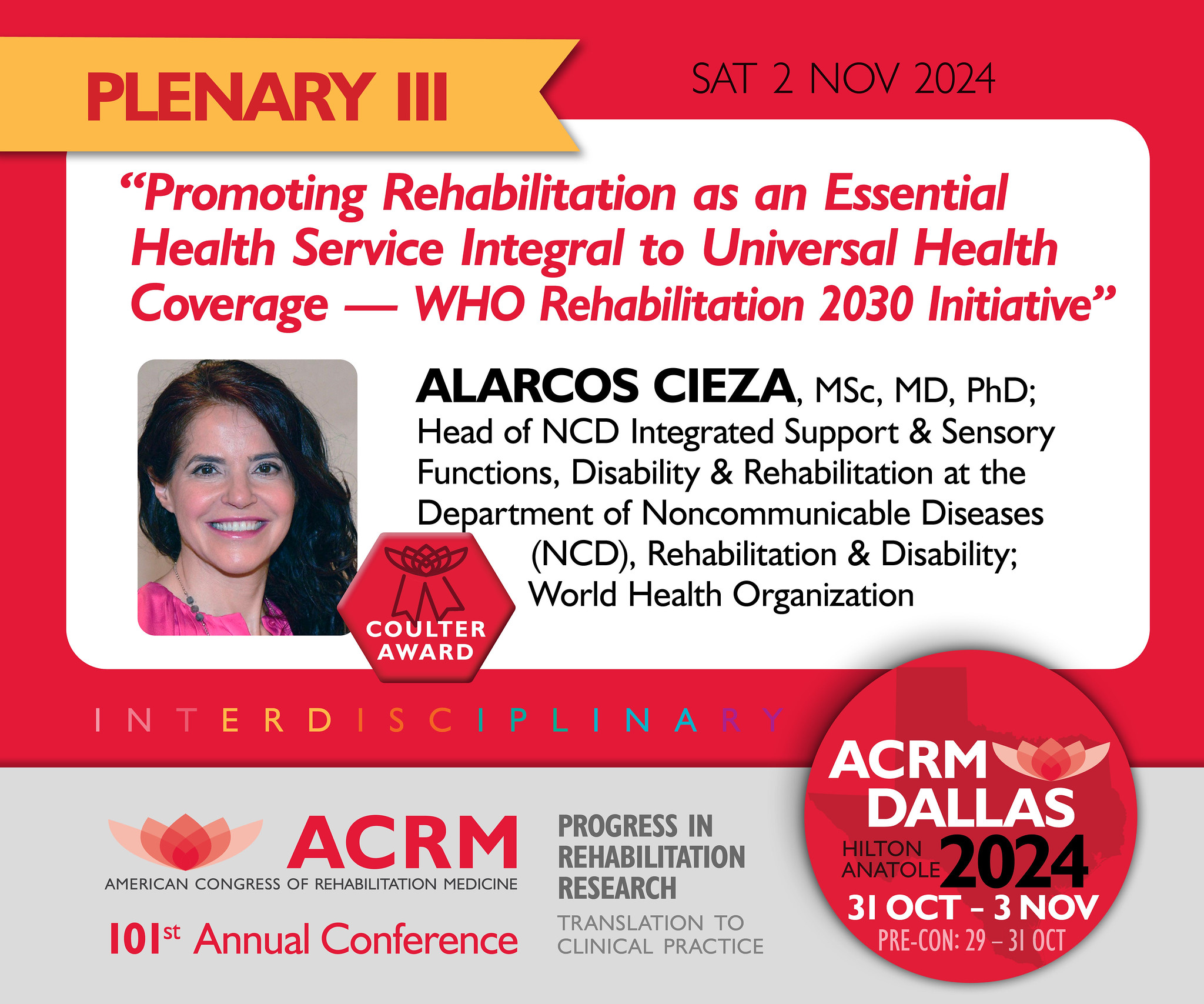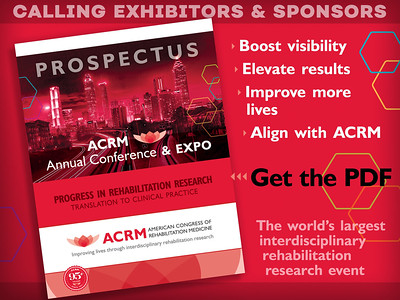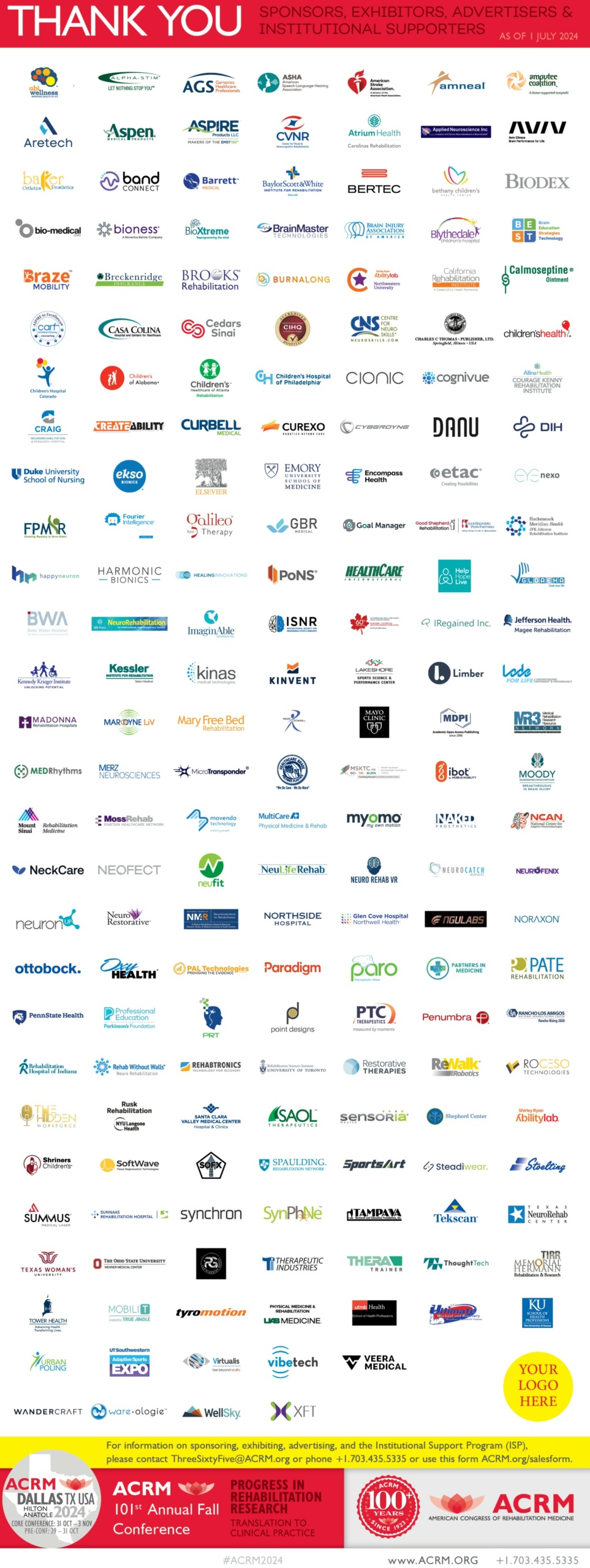Student Member Spotlight
Shahrose Aratia, HBSc
Masters in Occupational Therapy Student
University of Toronto
Q: Please tell us about your professional background.
I did my undergrad in Kinesiology from the University of Waterloo, just outside of Toronto, Canada. Part of my degree requirements were to complete five 4-month internships. These internships were pivotal in helping me discover my interest in rehabilitation and technology. After my undergrad, I decided to pursue my Masters in Occupational Therapy at the University of Toronto.
I’ve always been interested in technology’s potential to improve rehabilitation, health care, and quality of life of individuals overall. By pursuing a degree in OT, I was able to develop the tangible skills, theoretical knowledge, and clinical experiences to be able to contribute to the innovation.
I’m graduating in the Fall of 2020 and am excited to find a role where I can meaningful contribute to the field of rehabilitation and technology to improve patient outcomes!
Q: What inspired you to explore the applications of technology?
My internships during my undergrad were truly my foray into this world. It started with my internship at a medical technology startup, EyeCheck Inc, which aimed to automate retinoscopies. I was the business analyst in this role, and developed an appreciation of the industry, building partnerships with organizations, and the business side of things. I didn’t realize it then but it was here that I first learned about user experience research as I was trusted to run my own usability test by interviewing optometrists and asking them to provide us with feedback on our 3D-printed prototype.
Following this placement, I dabbled in research in the Rehabilitation Engineering Lab at the University of Waterloo. As a research assistant on the team, I supported various projects looking at the practical rehab applications of existing and new technologies. Very early on in my academic career I learned how to be an advocate for the clinician’s voice in research and industry as, in these roles, I was the only person with a background in a health care profession. Being in a room with researchers, engineers, and computer scientists was inspiring and collaborating with them on their research projects was a privilege.
I did my final internship at the Smart Health Leadership Center at the National University of Singapore – Institute of Systems Science, where I truly understood the global interest in using technology to improve lives. I interviewed Chief Innovation Officers at large hospitals, founders of startups, and representatives from insurance companies to better understand the current scope and future impact of technology on healthcare in South East Asia and the world.
In all these roles, I was in a cross-functional, interprofessional team, discussing what currently exists and coming up with the healthcare and rehabilitation solutions of tomorrow. Together, these experiences groomed me to be the person I am today and helped me realized that I want to be working at the intersection of rehabilitation and technology in the future!
Q: What interested you in the ACRM Technology Networking Group?
I was fortunate to attend the 2019 ACRM Conference in Chicago. I was completing my placement with a rehabilitation technology company, Flint Rehabilitation Inc. at the time. My supervisor invited me to join them at the conference and introduced me to many amazing professionals who are a part of the ACRM Technology Networking Group.
Q: Please tell us about your involvement in technology fields or projects?
In addition to the projects I’ve already mentioned, I was a research assistant in Toronto Rehabilitation Institute’s DriverLab, where I supported a study exploring the acceptability of autonomous vehicles among older adults.
I’m currently finishing up my graduate research project which aims to understand the acceptability of technology to assess for social isolation among older adults.
I wanted to bring my passion for technology to my OT class and so, this past year, I co-founded OTech at the University of Toronto. During COVID, OTech evolved into OTech Canada, a national student group, that aims to increase awareness and dialogue about occupational therapy and technology among OT students.
Q: In your professional roles, what is a challenge or limitation you have encountered with technology? How did you resolve it, or does the issue persist?
A challenge I’ve noticed is adoption of technology in the healthcare space or even in the healthcare mindset. I feel like many don’t truly appreciate the pervasiveness of technology and the role it plays in our lives today. There’s no denying that it’s already omnipresent in our personal lives, and it’s only a matter of time until it’s part of the professional lives of all healthcare providers too. But I believe it should be introduced into our professions on our terms, which is why it’s so crucial for us to get involved.
Q: What innovation or project are you most excited about in the upcoming year?
I’m excited to see what innovation comes out of the COVID-era. I’m sure a lot of change will come to the health care and health tech space as a result. For example, tele-therapy has seen an increase in popularity.
For my placement I was working with researchers and developers to create a tele-therapy protocol that involves the use of a robotic glove. This is just one of the many studies exploring the future of healthcare delivery that are currently in the works. I’m curious to see what so many of the great, innovative minds will invent during this time!
Q: What advice would you give to any healthcare professional who wants to be more involved in technology?
Get involved! If you’re a student, you can reach out to professors and PhD students at your school who are working on problems that really interest you – ask for 30 minutes of their time to chat. As a health care provider, try reaching out to start-ups that are working on a product that you’re a fan of or curious about. As the expert in the field, your insight is extremely valuable.
Put yourself out there and make yourself discoverable by going to inspiring events and chatting with amazing people! I find that many of us wait for a better time, but getting involved in anything tech-related doesn’t have to take more than a few hours a week. You’ll learn so much more about your own interests and strengths that you never even knew you had!
Q: Outside of professional activities, what hobbies you enjoy?
I enjoy reading fiction novels, particularly historical fiction and fantasy. I’m a big fan of the Harry Potter series. I also absolutely love getting outdoors, whether it’s for a hike or a bike ride, being in the sun (with tons of sunscreen on) is definitely my happy place.
Q: What professional achievement are you most proud of over the past year?
I’m currently wrapping up my graduate research project which focuses on understanding the acceptability of technology to assess for social isolation among older adults. We’ve been working on this project for just over a year now and we’ve received over 3000 responses to our survey. We were so honored to be one of the highest attended presentations at the Virtual Canadian Association of Occupational Therapists Conference 2020. This has been a hugely humbling opportunity for our research team!
Q: What is one less than 15-minute action that a TNG member or a work colleague could support other members or colleagues?
Ask your fellow members about their goals and aspirations and support them in whichever way possible. This could be something as simple as saying “I believe in you, you can do this” or by connecting them to someone you know in a field they may be interested in.
A lot of the time I’ve found my peers being hesitant to take the next step, and being that positive voice of encouragement can make all the difference. I’ve had a lot of people support and encourage me to be bold and chase my dreams; it goes a long way in helping one gain confidence in themselves. There are a lot of no-sayers out there, try to be someone that enables change and growth. Be a yes-sayer whenever you have the opportunity!
Q: Is there anything else you’d like to share with the technology networking group?
Thanks for reading about my journey! I’m graduating in a few months and can’t wait to start contributing to this field. I’d love to connect and learn more from others so do reach out if you’d like to say hi, chat, or have a cool idea I could help you with! Here’s my LinkedIn profile.
Member Spotlight
Mohanraj Thirumalai, MS, MEng, PhD
Co-PI/Co-Director, Rehabilitation Engineering Research Center
Director of ICT
University of Alabama at Birmingham, Lakeshore Research Collaborative
Q: Please tell us about your professional background.
I have a bachelors and a couple of masters in various engineering specialties and PhD in MIS. Since 2000, I have been engaged in technology developed and research focused on health promotion for people with disabilities. Currently as a faculty at University of Alabama at Birmingham, I serve as the Co-PI/Co-Director of a Rehabilitation Engineering Research Center (www.rectech.org) and the Director of ICT for the UAB/Lakeshore Research Collaborative.
Q: What inspired you to explore the applications of technology?
It all started as a regular graduate assistantship position and I grew into this field. About 10 years ago, I designed the first tailored online exercise program for people with various levels of disabilities. Some of the feedback I received on the project (from end users) highlighted the impact technology can have on the lives of people with disability. Since then, I have tried to get more deeply involved into the field.
Q: What interested you in the ACRM Technology Networking Group?
I have attended ACRM earlier and found ACRM to have a right balance between industry/vendors and academic research. Some of the technology focused tracks were particularly related to my work.
Q: Please tell us about your involvement in technology fields or projects?
I predominantly focus on telehealth technologies for people with disabilities. While telehealth sounds simple at the outset, the types of forms of it are so very varied. Currently, I am involved in several research projects which deliver interventions through websites, mobile apps (online and offline), text messages, interactive voice response technology and gaming platforms. All of these products/technologies are targeted at PWD.
Q: In your professional roles, what is a challenge or limitation you have encountered with technology? How did you resolve it, or does the issue persist?
As a technologist and researcher involved in telehealth technology, the digital divide is still true, especially in the deep south (Alabama, Mississippi etc). This has created unique opportunities and challenges for delivery of video based intervention content. We have overcome these limitations by bundling our solutions to work with complementary communication modalities such as plain old telephone systems, combined with offline capable mobile apps that can synchronize with our server when online.
Q: What innovation or project are you most excited about in the upcoming year?
I am currently working on an artificial intelligence assisted, inclusive diabetes management solution for PWD. This project capitalized on several recent technological innovations and will be available to end users through a variety of communication channels.
Q: What advice would you give to any healthcare professional who wants to be more involved in technology?
I never believe that technology alone can never be the solution for any problem and at best, the technology can be a facilitator. This is particularly important for people with disabilities for that every individual is facing unique challenges or limitations. That said, establishing the right balance/amount of technology is vital for the success of failure of any intervention.
Q: Outside of professional activities, what hobbies you enjoy?
I teach coding (programming) for under-privileged kids and has been a gratifying experience. However, it has been paused due to Covid-19.
Q: What professional achievement are you most proud of over the past year?
I am currently working on the Covid-19 re-entry technology (symptom tracking) for ALL of Alabama’s universities and public schools. This technology is also being used widely outside of Alabama.
Member Spotlight
Natalee Takasumi, DPT
Clinical Applications Manager
Hocoma
Q: Please tell us about your professional background.
I received my DPT from the University of Colorado in 2014 and started working at Craig Hospital as a per diem Physical Therapist, floating between inpatient brain injury, inpatient spinal cord injury, and the PEAK Center. After 2 years, I took over the position of the PEAK Center Supervisor role. The PEAK Center is a shared space within Craig Hospital, where a large amount of their advanced rehabilitation technology is housed. The program that I oversaw, created access for community members living with a neurological condition to an adaptive wellness program, adjunct therapy to complement their outpatient program, and the robotic technology. Over the years of growth, my staff and I were treating around 300+ hours of sessions per week. During this time, I became adept on over 15 unique rehab devices and was a device champion and educator on all devices. In April of 2019, I made the transition to industry and have been a Clinical Applications Manager for Hocoma since then. Within this role, I am responsible for training all of our devices (both upper and lower extremity), sales education, clinical integration support, just to name a few.
Q: What inspired you to explore the applications of technology?
I was lucky to have such great mentorship at Craig Hospital and to see the application of technology for intense rehabilitation. I was able to see first-hand, some very miraculous outcomes in patients. If these patients had not used technology as an adjunct to conventional therapy, I don’t know that they would have had as much return of function or as soon as they did following their injury. Needless to say, rehabilitation technology also made it physically easier on staff to get patients up and moving sooner as well.
Q: What interested you in the ACRM Technology Networking Group?
I learned about the ACRM Technology Networking group through an international colleague. I was glad to find other Clinical Managers in the industry to share like-minded ideas with.
Q: Please tell us about your involvement in technology fields or projects.
As a Clinical Manager for Hocoma I wear many hats, but the one I most enjoy is being able to go to different hospitals and clinics to do onsite staff training. It is really exciting to be able to work with staff on how to successfully integrate the technology as another tool in the therapists toolbox. I really enjoy the clinical decision making discussions and fostering the knowledge on how to utilize the equipment within their standard therapy plan. I always welcome feedback on the equipment as well to bring back to our product management team.
Q: In your professional roles, what is a challenge or limitation you have encountered with technology? How did you resolve it, or does the issue persist?
As I already stated, technology should be a complement to traditional therapy. When we treat our patients, we are always using many different tactics to work on their goals; these techniques change weekly, day-to-day, and even within a single therapy session. Successful integration of technology is much the same. Unfortunately, most research protocols are very much conventional therapy or technology and not a balance of both. It is so important to practice evidence-based therapy, but with that, we need to also recognize what limitations there are when comparing a research protocol to our daily practice.
Q: What innovation or project are you most excited about in the upcoming year?
We have a new software package that is rolling out for the Lokomat Pro, which is really exciting. The new games are even more engaging for the patient’s and really require the patient to be active throughout the session. One such example is an application that the robotic assistance will actively adapt to the patient’s level of activity throughout the gait cycle, and there is good visual biofeedback for the patient. In the past, the therapist has always been responsible for decreasing the robotic assistance; most often they overestimate the needs of the patient.
Q: What advice would you give to any healthcare professional who wants to be more involved in technology?
I would first say that it is important to become a “superuser” or “device champion” in your facility. Take on the responsibility of educating others and encouraging them to integrate the technology into their regular practice. Being able to be an early adopter comes with it’s own challenges, especially if technology is new to the facility, but it’s very rewarding if you can overcome these points. After that, if you are interested in making a switch to the technology industry, reach out to the companies that manufacture the devices you use in practice to see if they have freelance instructor positions. This will help to give you a taste of going to other facilities and conducting trainings, and see if you really like that avenue.
Q: Outside of professional activities, what hobbies you enjoy?
I’m one of those weird people that finds running to be meditative. I typically complete a handful of half marathons and marathons a year, but I’m just logging miles with no races in sight right now with the pandemic. I don’t do it as often as I would like, but I’m lucky to live in Colorado and enjoy mountain climbing.
Q: What professional achievement are you most proud of over the past year?
I’m actually really proud of my involvement in the ACRM Technology Networking group Clinical Managers taskforce. I’ve only been in my role with Hocoma for 15 months, so joining this committee and having a solid role in a few of the projects has been outside of the box for me.
Q: What is one less than 15-minute action that a TNG member or a work colleague could support other members or colleagues?
If you have colleagues that are active on LinkedIn, help with sharing their posts and promoting their activities. They are going out on a limb by posting something, so it can go a long way to help distribute the content.




